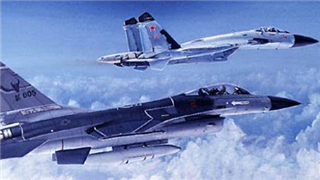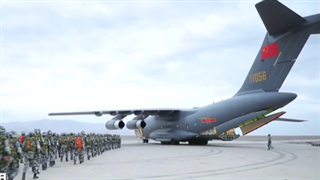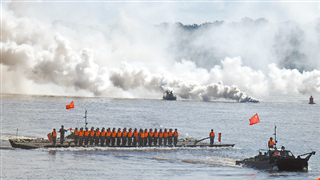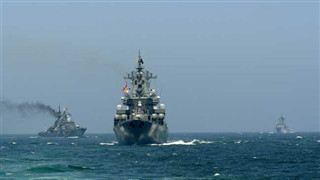CHONGQING, Aug. 15 (Xinhua) -- When Japan announced its surrender in World War II on Aug. 15, 1945, every corner of China and each victim of the Japanese invasion was full of joy, including a major munitions factory in southwestern Chongqing.
Located along the Jialing River, a principal tributary of the Yangtze River, the arsenal manufactured more than 60 percent of the weapons and ammunition produced by all the military factories during the Chinese People's War of Resistance Against Japanese Aggression.
Although the war-torn days are long gone, memories of this legendary arsenal remain.
For Zheng Hongquan, 90, details of the arsenal are still fresh in memory.
Born in the city of Nanjing, east China's Jiangsu Province, Zheng's father was a worker at the Jinling Arsenal, one of the largest and most important arsenals during the War of Resistance Against Japanese Aggression.
In order to protect important national industry and talents during the war, China evacuated more than 130,000 tonnes of goods and over 30,000 personnel from various arsenals to the vast southwestern regions by the end of 1937. Zheng's family and the arsenal also moved to the inland city of Chongqing at that time.
In the eyes of Zheng, it was Li Chenggan, the head of the arsenal, who made the factory glorious.
Led by Li, all the staff of the arsenal shipped around 4,300 tonnes of equipment from the lower reaches of the Yangtze River to the upper reaches in Chongqing in 16 days, under heavy bombardment, quickly built up a new factory called the 21st Arsenal and resumed work and production, Zheng said.
"His contribution to the War of Resistance Against Japanese Aggression was not limited to the number of weapons that the factory produced, he also made significant improvements in the performance of the weapons," Zheng recalled, adding that Li, who graduated from a Japanese university, devoted himself to the research and improvement of weapons manufacturing technology and managed to produce weapons more suitable for the Chinese and put them into production.
From February 1938 to December 1944, the Japanese warplanes indiscriminately bombed Chongqing, then China's provisional capital, and the arsenal was one of the key targets of Japanese bombing.
Historical materials showed that the factory was bombed 14 times by Japanese planes between 1940 and 1941, killing and injuring more than 40 workers.
Nevertheless, the battered factory did not stop manufacturing, and workers there were in high spirits. They kept producing ammunition around the clock, leading to great improvements in quality and substantial growth in the number of weapons.
At present, part of the factory in Chongqing has been listed as a cultural relics protection site, reminding people of the difficult times and those brave people.
"Our hard-won peaceful life is created by countless martyrs who sacrificed their lives for the country. I hope the glorious memory of the arsenal can inspire the younger generations to never forget history," Zheng said.











